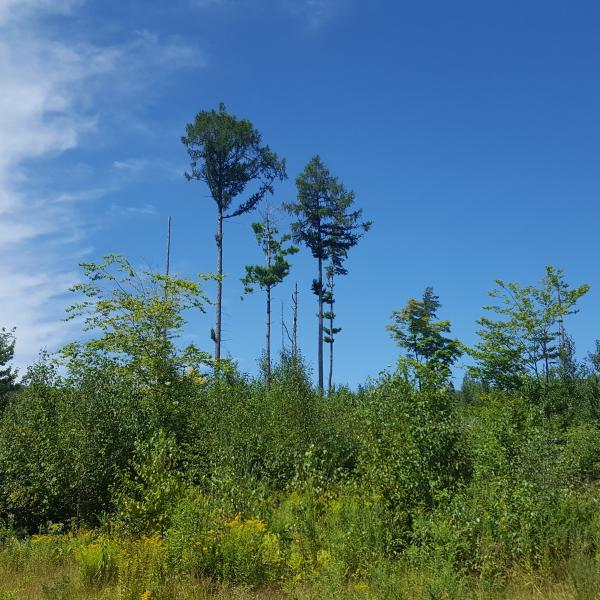
Young forest, the forest type that is dominated by dense shrubs and trees less than 20 years old, is an extremely important cover type for wildlife in Vermont. More than 60 wildlife species – including mammals, birds, reptiles, and insects – need young forest to survive. Young forest patches have an abundance of fruit- and nut-producing shrubs and small trees, attract large quantities of pollinators and other insects, and provide dense vegetation for wildlife to hide and nest in.
Currently, in most regions of Vermont, young forest is less abundant today than it was before European settlement when natural disturbances created gaps and openings in the widespread forest. Increasing the amount of young forest in the state has been identified as a high priority objective in order to maintain an ecologically functional landscape in Vermont. Private landowners can play an important role in increasing the amount of this habitat present in our forests through implementing patch cuts, clear cuts, and group selections in specific forested stands.
Some of the most ideal places to create young forest habitat are in areas where woody invasive plants, such as buckthorn, honeysuckle, and barberry, are thriving in the understory and native plants are being outcompeted. Depending on the severity of the infestation, the invasive plants can be treated before or after creating the forest openings. If invasive plants are present in light infestations, spot treating prior to creating the young forest patches with chemicals or by mechanical means can be the most effective use of time and resources. However, if invasive plants are present in heavy, dense infestations, using a large mechanical grinder (sometimes called a brontosaurus) can mulch the invaders to the ground as the young forest patches are created. Following up with a spot treatment on any new invasive plants can then be done at a lighter rate.
For more information on creating young forest or for treating invasive plants on private property, landowners should contact their County Forester, their consulting forester, or Andrea Shortsleeve at Vermont Fish and Wildlife (andrea.shortsleeve@vermont.gov).
Article and photo credit: Andrea Shortsleeve, VT Fish and Wildlife